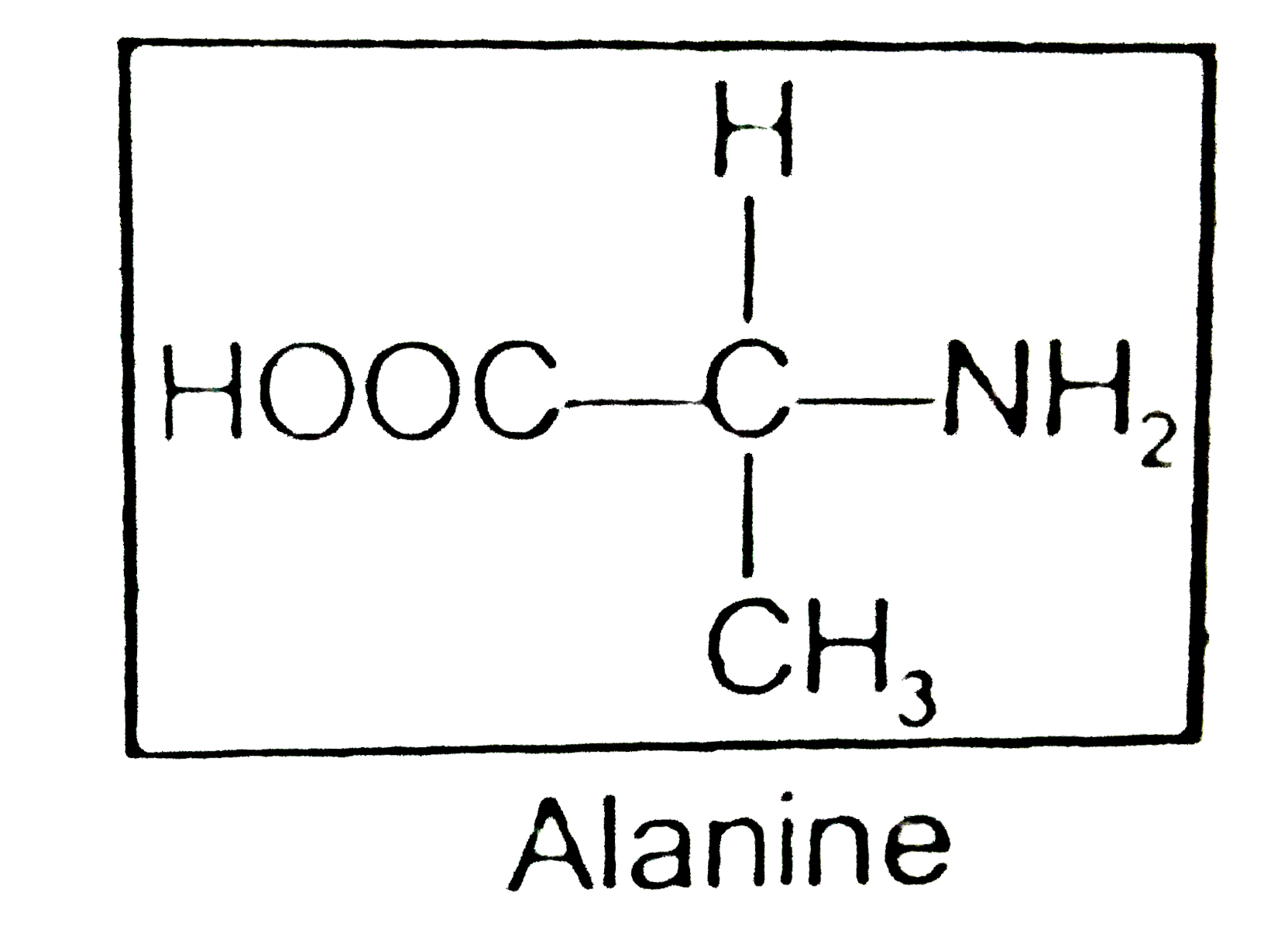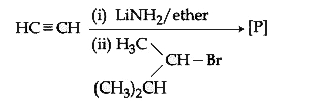The product obtained from the following sequence of reactions is
(H3C)3−C≡CHHgSO4−−−→H2SO4ANaBH4−−−−→B
(CH3)3C−OH∣CHCH3
(CH3)3C−CH=CH2
(CH3)2C=C(CH3)2
(CH3)3C−CH2−CH2OH
The correct Answer is:A
To solve the given problem, we will follow the sequence of reactions step by step.
Step 1: Identify the starting compound
The starting compound is (H3C)3−C≡CH, which can be represented as:
- (CH3)3C≡CH (2-methyl-1-butyne).
Step 2: Reaction with H2SO4 and HgSO4
The first step involves the reaction of (H3C)3−C≡CH with sulfuric acid (H2SO4) and mercuric sulfate (HgSO4). This reaction is known as the hydration of alkynes, which leads to the formation of an enol that will tautomerize to a ketone.
1. The triple bond will undergo hydration, where the mercuric ion (Hg2+) adds to one carbon of the triple bond, forming a carbocation.
2. The more stable carbocation will form on the more substituted carbon. Here, the carbocation will form on the carbon adjacent to the triple bond (2° carbocation).
3. Water (from H2SO4) will then attack this carbocation, leading to the formation of an enol.
The structure after this step will be:
- (CH3)3C-CH=OH (2-methyl-2-buten-1-ol).
Step 3: Tautomerization
The enol formed in the previous step will undergo tautomerization to form a ketone. The hydrogen from the hydroxyl group will shift to the adjacent carbon, and the double bond will shift to form a carbonyl group.
The tautomerization will yield:
- (CH3)3C=O (2-methyl-2-butanone).
This compound is our product A.
Step 4: Reaction with NaBH4
The next step involves the reduction of the ketone (2-methyl-2-butanone) with sodium borohydride (NaBH4), which is a mild reducing agent.
1. Sodium borohydride will reduce the carbonyl group (C=O) of the ketone to form an alcohol.
2. The reduction will yield:
- (CH3)3C-OH (2-methyl-2-butanol).
This compound is our product B.
Final Product
Thus, the final product obtained from the sequence of reactions is (CH3)3C-OH (2-methyl-2-butanol).
Answer
The product obtained from the following sequence of reactions is (CH3)3C-OH.
---
The starting compound is (H3C)3−C≡CH, which can be represented as:
- (CH3)3C≡CH (2-methyl-1-butyne).
The first step involves the reaction of (H3C)3−C≡CH with sulfuric acid (H2SO4) and mercuric sulfate (HgSO4). This reaction is known as the hydration of alkynes, which leads to the formation of an enol that will tautomerize to a ketone.
2. The more stable carbocation will form on the more substituted carbon. Here, the carbocation will form on the carbon adjacent to the triple bond (2° carbocation).
3. Water (from H2SO4) will then attack this carbocation, leading to the formation of an enol.
- (CH3)3C-CH=OH (2-methyl-2-buten-1-ol).
The enol formed in the previous step will undergo tautomerization to form a ketone. The hydrogen from the hydroxyl group will shift to the adjacent carbon, and the double bond will shift to form a carbonyl group.
- (CH3)3C=O (2-methyl-2-butanone).
The next step involves the reduction of the ketone (2-methyl-2-butanone) with sodium borohydride (NaBH4), which is a mild reducing agent.
2. The reduction will yield:
- (CH3)3C-OH (2-methyl-2-butanol).
Thus, the final product obtained from the sequence of reactions is (CH3)3C-OH (2-methyl-2-butanol).
The product obtained from the following sequence of reactions is (CH3)3C-OH.
Topper's Solved these Questions
- JEE MAIN REVISION TEST- 24 Book:VMC MODULES ENGLISHChapter:JEE MAIN REVISION TEST- 24 Exercise:CHEMISTRY (SECTION - 2)
Explore 5 Videos
- JEE MAIN REVISION TEST- 16Book:VMC MODULES ENGLISHChapter:JEE MAIN REVISION TEST- 16Exercise:CHEMISTRY (SECTION 2)
Explore 5 Videos
- JEE Main Revision Test-20 | JEE-2020 Book:VMC MODULES ENGLISHChapter:JEE Main Revision Test-20 | JEE-2020 Exercise:CHEMISTRY
Explore 25 Videos
Similar Questions
Knowledge Check
The product obtained from the following sequence of reactions is
CH3−C≡CHHgSO4−−−→H2SO4ANaBH4−−−−→BApropanolB2-propanolC1-propanolDpropanhe
CH3−C≡CHHgSO4−−−−−−−→dil.H2SO4 product
Product of the above reaction is
View SolutionThe major product (Y) in the following reactions is:
CH3−CH3∣CH−C≡CHHgSO4,H2SO4−−−−−−−−→H2OX(i)C2H5MgBr,H2O−−−−−−−−−−−−−→(ii)Conc,H2SO4/ΔY
View SolutionAlanine can be obtained from acetaldehyde by the following sequence of reactions.
Alanine
HOOC−H∣C∣CH3−NH2

View SolutionWhat is the final product of the following reaction sequence?
(CH3)3C−C≡C−H(i)dil.H2SO4/HgSO4−−−−−−−−−−−−−−→(ii)NaBH4/ethanol(iii) dil . acid
View SolutionThe major product [R] in the following sequence of reactions is :

(i)HgSO4/H2SO4−−−−−−−−−−−→(ii)NaBH4[Q]Conc. H2SO4−−−−−−−−→Δ[R]
View SolutionPh−C≡C−CH3HgSO4−−−→H2SO4A,
View SolutionEnd product of the following sequence is : CaO+CHeat−−→(A)H2O−−→(c)Hg2+−−−→H2SO4(C)
View Solution

